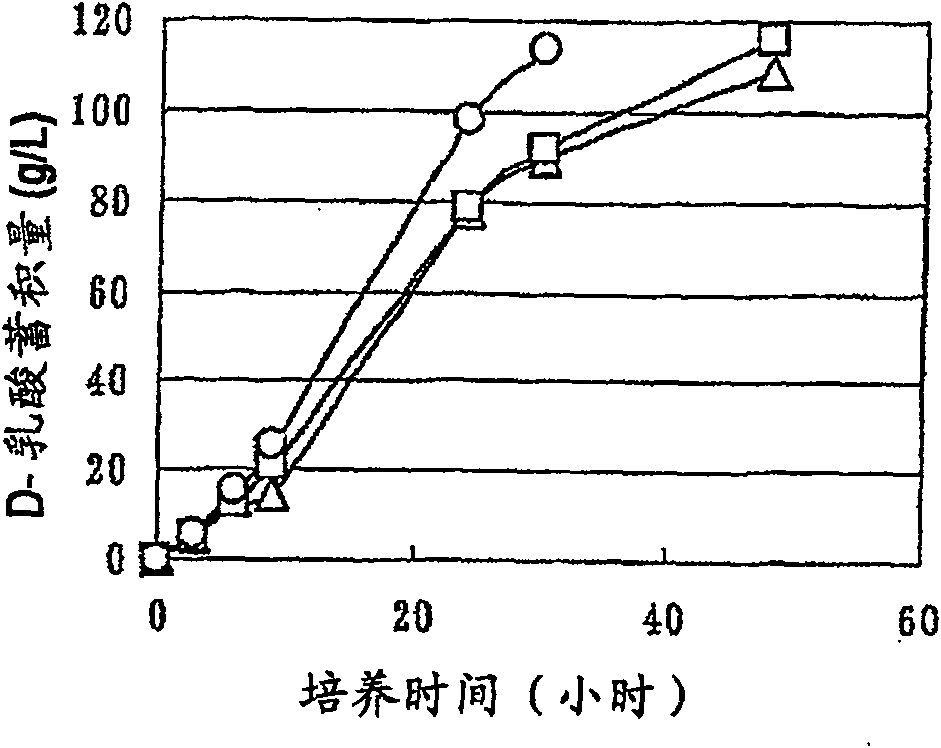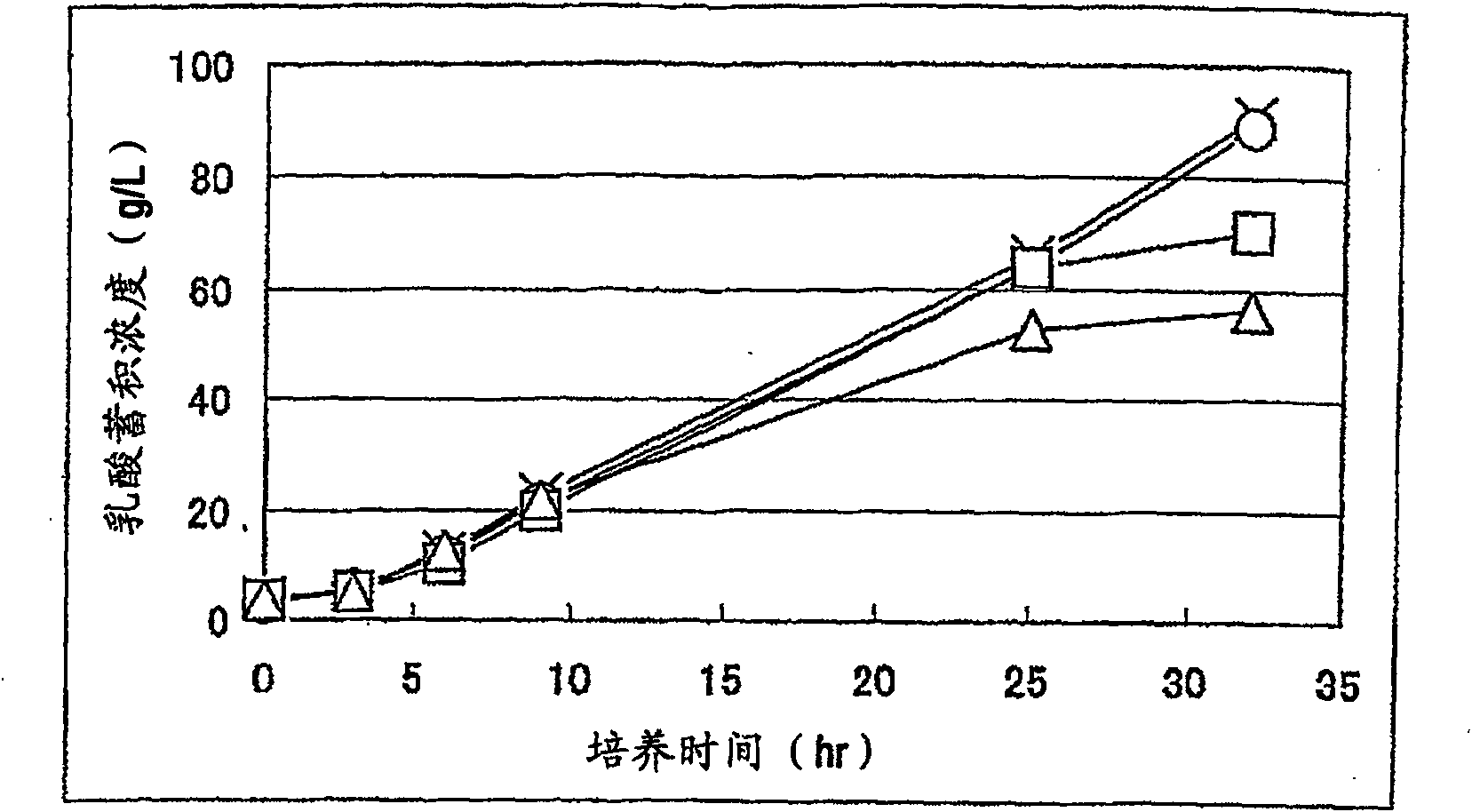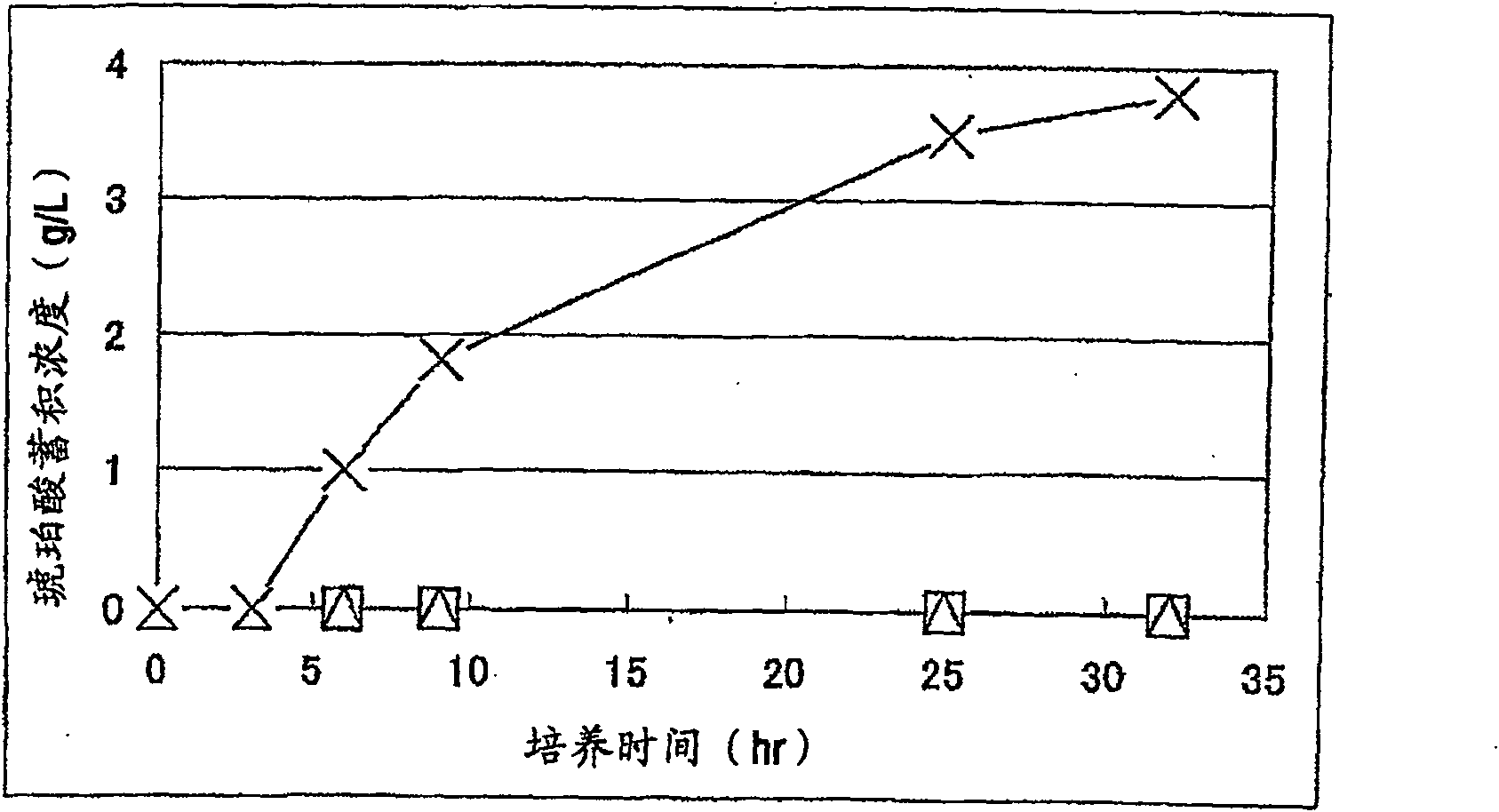Biocatalyst for producing d-lactic acid
A lactic acid and production method technology, applied in the field of microorganisms producing D-lactic acid, can solve problems such as inactivation of aspA, research on the production of fumaric acid, difficulty in decomposing aspartic acid or glutamine, etc., and achieve a decrease in the content of pyruvate , Inhibition of by-products and reduction of purification costs
- Summary
- Abstract
- Description
- Claims
- Application Information
AI Technical Summary
Problems solved by technology
Method used
Image
Examples
Embodiment 1
[0129] [Example 1] Production of lactic acid using strain MT-10364
[0130] The composition of the culture medium used for the culture is shown in Table 1 below.
[0131] Table 1
[0132]
[0133] This medium contains 0.34% of reducing sugars, 0.31% of D-lactic acid, 0.31% of L-lactic acid, 0.33% of free amino acids, and trace amounts of various organic acids after acid hydrolysis derived from grain extracts.
[0134] As a pre-culture, Escherichia coli MT-10934 was planted in an Erlenmeyer flask containing 25ml of LB Broth, Miller culture solution (Difco244620), stirred overnight at 120rpm, and then cultured with 475g of the above composition In a 1L culture tank (a culture device BMJ-01 manufactured by ABLE), the entire amount of bacteria is planted. Under the conditions of atmospheric pressure, an aeration rate of 0.5 vvm, a stirring speed of 150 rpm, a culture temperature of 31° C., and a pH of 6.7 (adjusted by NaOH), the culture was cultured until the glucose was completely ...
Embodiment 2
[0141] [Example 2] Construction of ldhA expression vector and lactic acid producing bacteria
[0142] In order to obtain the serine hydroxymethyl transferase (glyA) promoter, the genomic DNA of Escherichia coli was used as the template, and the sequence number 1 and sequence number 2 were used as probes. PCR was used for amplification and restriction The resulting fragment was cleaved with the endonuclease EcoRI, thereby obtaining an approximately 850 bp fragment encoding the glyA promoter. Furthermore, in order to obtain the structural gene of ldhA, the genomic DNA of Escherichia coli was used as a template, and the sequence number 3 and sequence number 4 were used as probes, amplified by PCR, and cut with restriction enzymes EcoRI and HindIII The obtained fragment, thereby obtaining an ldhA structural gene fragment of about 1.0 kbp. The above two fragments were mixed with the fragment obtained by cutting plasmid pUC18 with restriction enzymes EcoRI and HindIII, and ligated with ...
Embodiment 3
[0145] [Example 3] Lactic acid production using lactic acid producing strain MT-10934 / pGlyldhA
[0146] As a pre-culture, the lactic acid-producing bacteria MT-10934 / pGlyldhA strain obtained in Example 2 was planted in an Erlenmeyer flask containing 25ml of LB Broth, Miller culture solution (Difco244620), and cultured in the same manner as in Example 1. . After the incubation, the content and optical purity of lactic acid were determined by HPLC according to conventional methods. The results are shown in Table 3.
[0147] table 3
[0148]
[0149] In the above results, the reason why the amount of total lactic acid exceeds the amount of glucose added at the beginning of the culture is the use of the carbon source in the grain extract. However, even if all reducing sugars, organic acids, and amino acids in the grain extract are used, a conversion rate of 90% or more can be achieved.
PUM
 Login to View More
Login to View More Abstract
Description
Claims
Application Information
 Login to View More
Login to View More - R&D
- Intellectual Property
- Life Sciences
- Materials
- Tech Scout
- Unparalleled Data Quality
- Higher Quality Content
- 60% Fewer Hallucinations
Browse by: Latest US Patents, China's latest patents, Technical Efficacy Thesaurus, Application Domain, Technology Topic, Popular Technical Reports.
© 2025 PatSnap. All rights reserved.Legal|Privacy policy|Modern Slavery Act Transparency Statement|Sitemap|About US| Contact US: help@patsnap.com



